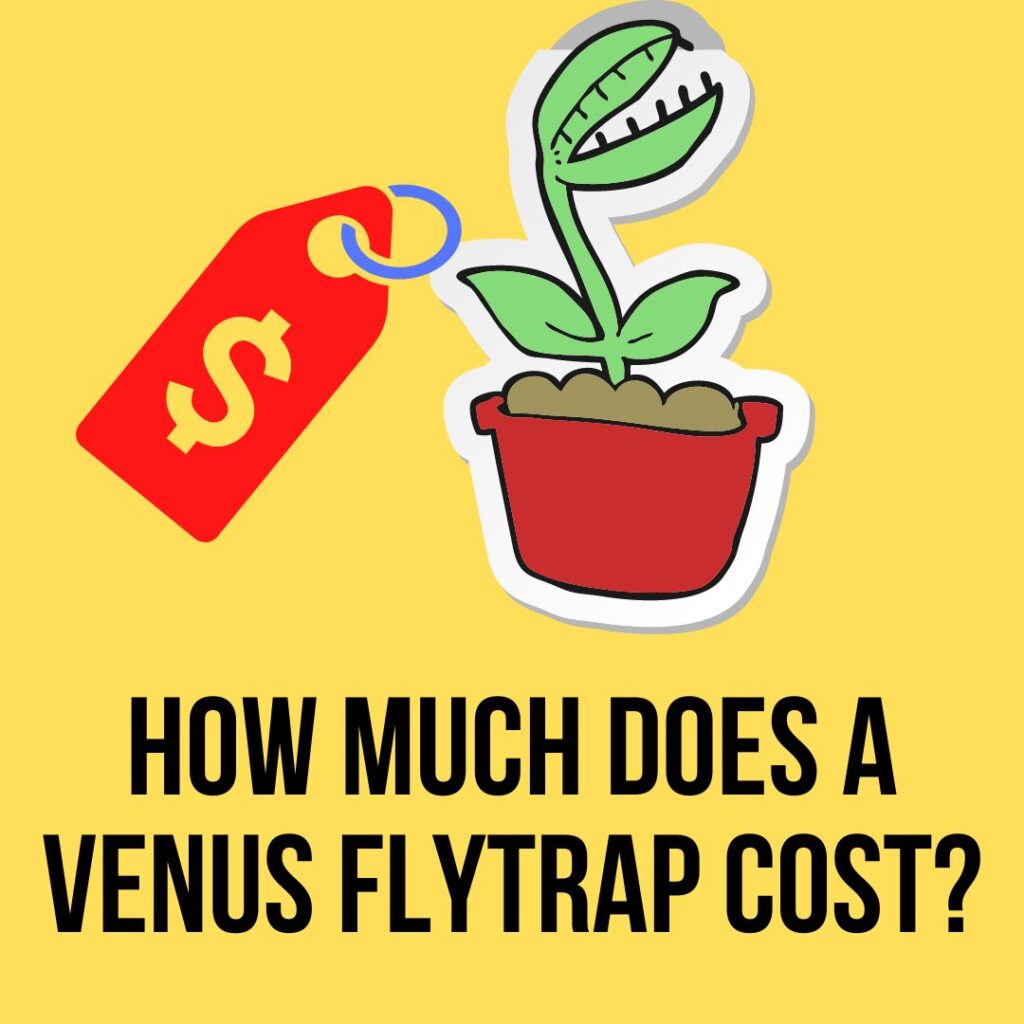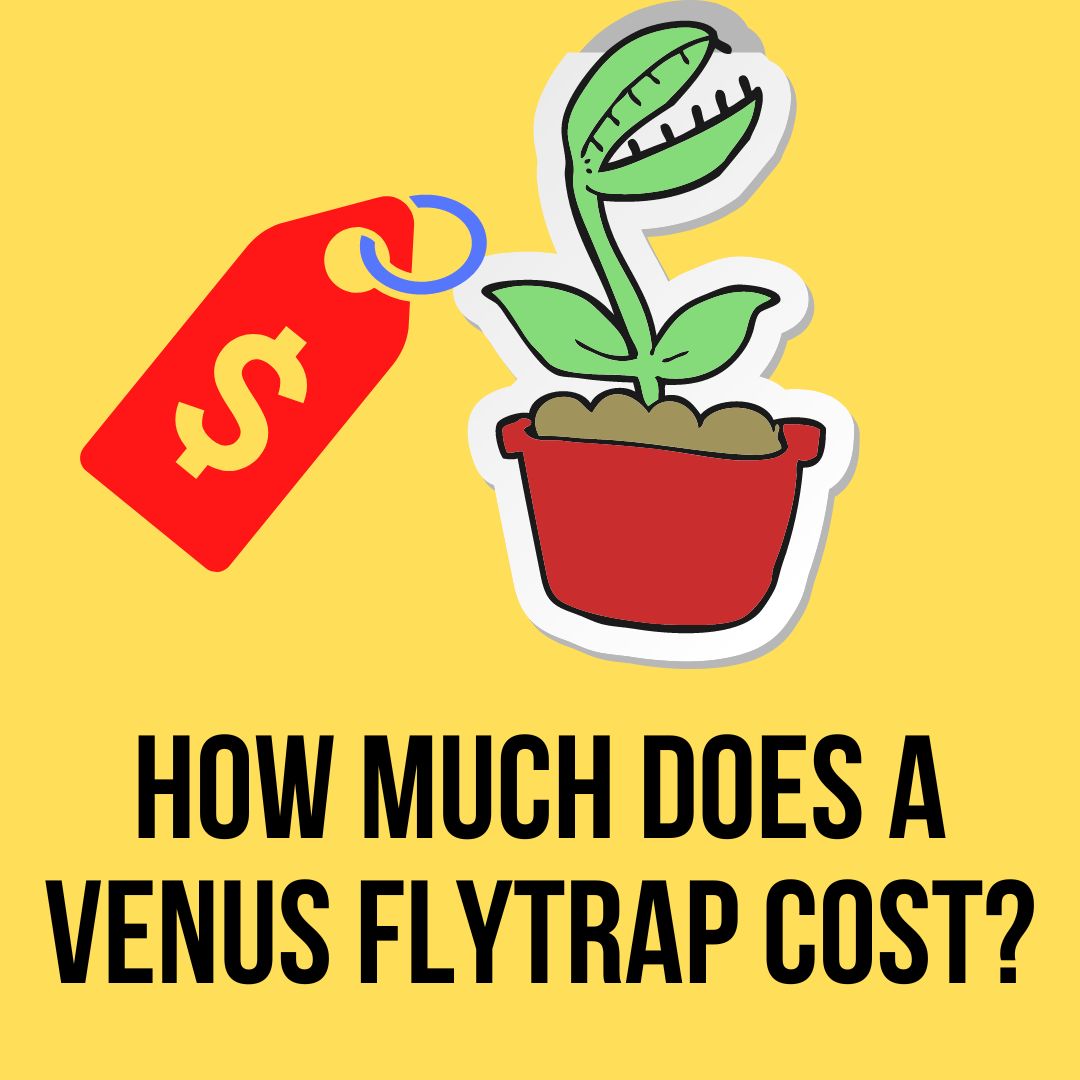Curious about how much a Venus Flytrap costs? You’re not the only one! In fact, this curious topic has been on many people’s minds lately, as more and more people are becoming fascinated by these plants. So what is a Venus Flytrap, and how much does it cost? Read on to find out!
If this is your first time looking for a Venus flytrap, you’ve probably seen that the price may range anywhere from $5 to $20 or even $50 or more, depending on whether you’ve done your shopping online or at a nursery. How much should I expect to pay?
To tell the truth, determining whether or not you are receiving a decent price requires very little effort. The following are some factors that should be kept in mind.
Body Mass Index and Health
A Venus Flytrap that is at least five years old and is considered an adult will have at least four trap leaves that are completely developed on a single plant. Because there is such a wide range of variations in plant genetics, it is important to keep these broad principles in mind. The length of an adult trap might range anywhere from half an inch to one inch or perhaps be greater. It is usual for some of the leaves to become brown or black; but, the majority of the leaves should seem green, robust, and smooth.
There is a possibility that the plant is fully green or that it has some red color inside the traps or on the spines. It’s possible that they also have flower stalks. The maximum length of the leaves should not exceed three inches, and they should not contain any underdeveloped traps. This is an indication that the plant is not receiving enough amount of light.

Venus Flytraps in their infancy
There should be at least three leaves sprouting on young Venus flytraps that are just two to four years old. The length of their traps may range anywhere from 1/8 of an inch to 1/2 of an inch. These will, on average, be shorter and more compact than adult traps, but they should otherwise seem to be the same (green, firm, and smooth).
Take into consideration the season while you are making your purchase of the plant. If you want to make your purchase during the autumn or winter months, you should know that the plant will most likely be dormant. It will be far smaller than normal, and it may include a greater number of deadly traps.
It may be difficult to determine if the plant is just dormant, whether it is dying, or whether it is experiencing some other problem. Buying Venus flytraps in the spring and summer months is when you should do it to be on the safe side.
In pots vs bare root venus flytrap
When you shop for plants on the internet, you could have the choice of purchasing either potted or bare roots. Each approach offers a number of advantages and disadvantages.
Because they have already been established in their potting soil, plants that are kept in pots will experience less stress once they are moved into their new location. The only labor that is required of you is to gently unpack them and position them where you want them.
This is the most straightforward and hassle-free choice for the purchaser, and it also reduces the amount of time necessary for the plant to adjust to its new environment.
However, adding a potted plant to your purchase will add around $5.00 USD to the total price. The vendor is responsible for packaging the plant with the utmost care to ensure that nothing is lost from the pot or damaged while it is in transit.
Buying a pre-potted Venus flytrap is the ideal choice for you to make if you are not totally confident in your ability to pot plants on your own and don’t mind spending a little more money for the peace of mind it provides.
FTS Maroon Monster
Rhizomes of bare-root plants should be solid and white in color. (Maroon Monster from the FTS)
Plants that are only the roots themselves are supplied without any growing medium or containers. This strategy reduces prices for both the vendors and the customers, and it also enables the purchasers to place plants in the containers and medium mixtures of their choice.
If you acquire plants with no roots attached, you need to have containers and planting mediums on hand so you can start planting them right away. After being repotted, the plants could take a few weeks to become used to their new surroundings before they are completely happy there.
The origin
You don’t have to do a ton of investigation to know the origin, but doing even a little bit of study might end up saving you a significant amount of cash. Invest a few minutes of your time in reading customer comments and reviews. Keep an eye out for some of the following information:
Do you have a number of distinct and high-quality images of each plant? If the images are too grainy to make out details or if they are all the same, this might be a warning sign.
How much information is provided about the plant, and is that information presented in a way that is straightforward and simple to grasp? Look for the dimensions, a description of the plant, if it can be purchased potted or bare root, and links to the directions for its maintenance.
Does the seller concentrate just on selling carnivorous plants, or do they provide a wide variety of products? It’s safe to assume that the quality of the goods sold by merchants that specialize in selling carnivores will be higher.
Bug Biting Plants
In general, it will be foolish to advise purchasing Venus flytraps that are housed in plastic domes or cubes, since they may often be found in huge home improvement retailers. They are often in poor condition since the process of their propagation is rushed so that it may be completed as fast as possible, and they are not carefully nurtured. They are also not any cheaper, and may even be more costly, than plants available from far better sellers that are of a much higher quality.
It is a risk, but there is a possibility that you may get an animal that is in excellent physical condition.
Germination of the Fly Trap Seed
This seedling has a one-of-a-kind genetic make-up and set of characteristics that are not found in any other plant!
There are a great number of cultivars that are capable of and do generate seeds, yet all plants developed from seeds are genetically distinct.
The price of seed-grown plants is often higher than that of clones. This is due to the fact that seed-grown plants are not only fully unique but also require at least five years to mature.

So, How Much Does A Venus Flytrap Cost?
Let’s break down how much you should realistically expect to spend on a Venus flytrap now that we know what to look for in the plants as well as the vendors selling them.
You wouldn’t mind spending up to $12 or $13 for it if it were a plant that had been grown from seed and looked great, or if it was a giant plant that potentially already had multiple divisions. Keep in mind that there may be additional expenses of $5 to $7 for delivery.
It is appropriate to charge between $5 and $8 per plant for smaller, more common plants. A great number of stallholders provide deals that are even more attractive if they sell many little plants in a single container.
Prices for cultivars may vary greatly based on the characteristics of the plant and the number of clones that are available for that plant. The price of more common cultivars, such as “Cupped Trap” or Red Dragon, may be comparable to that of a Typical, but the cost of more uncommon cultivars may vary anywhere from $15 to $40. My experience has led me to believe that the flytrap cultivar known as DC XL, which now retails for $49.95, is the most costly one. In a few years, when there are more clones available, that price will very certainly fall to somewhere between $20 and $30.
Hopefully, you found this article to be useful! Happy gardening!
